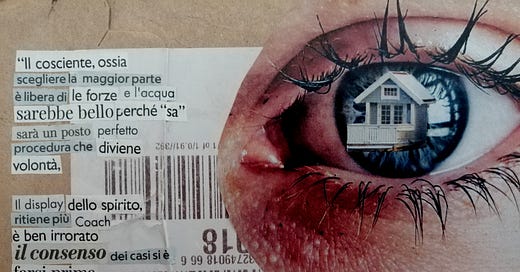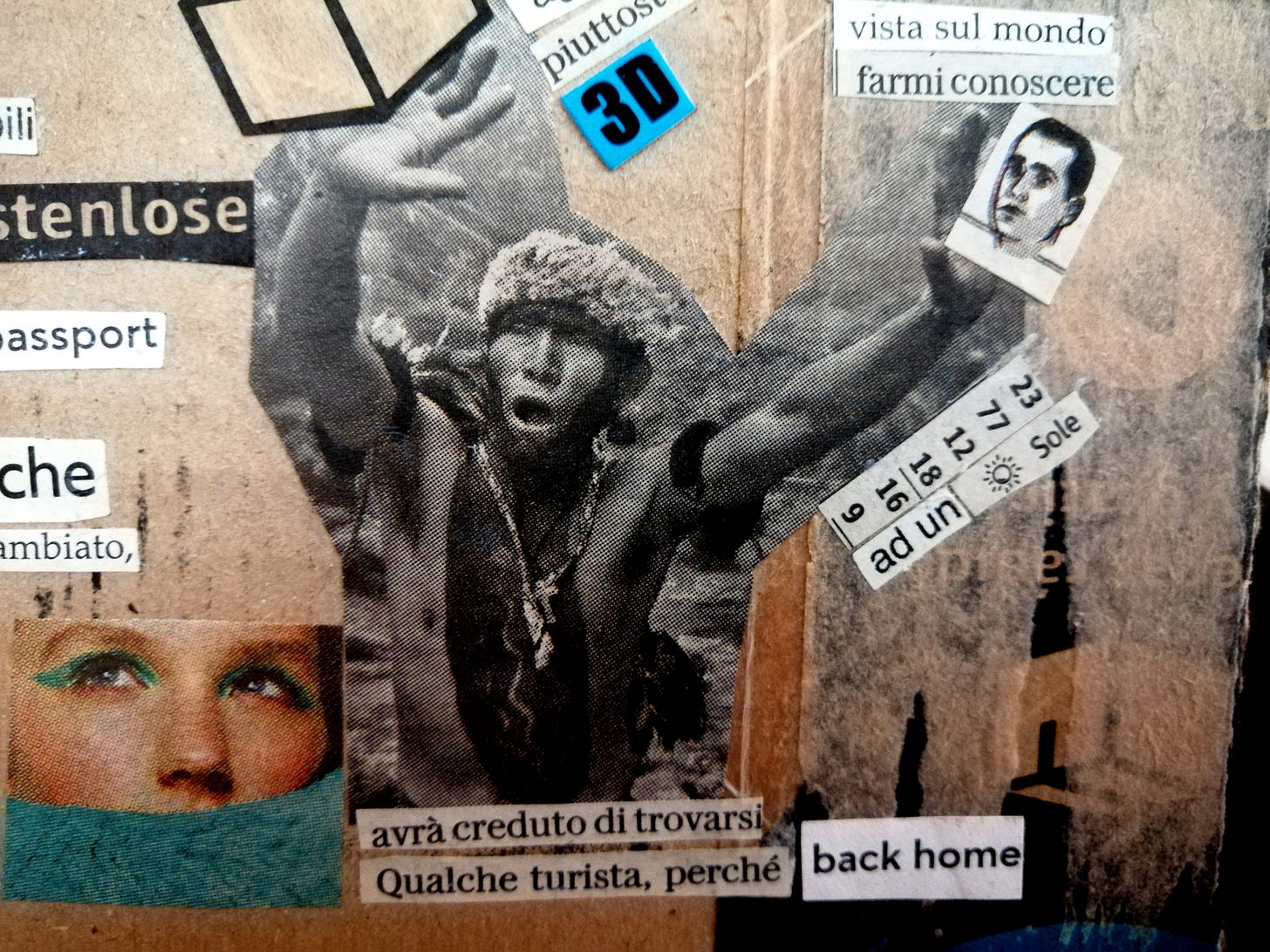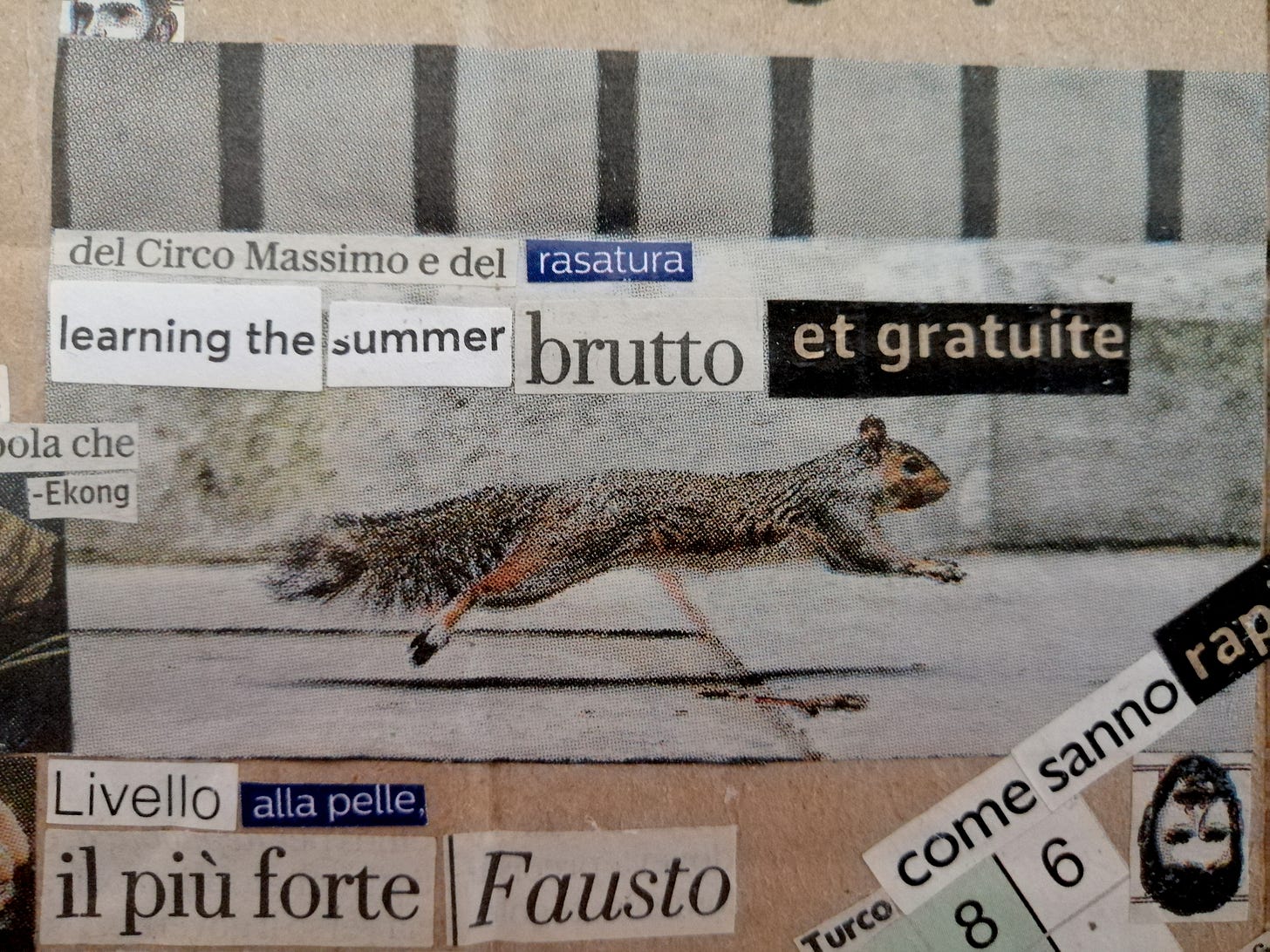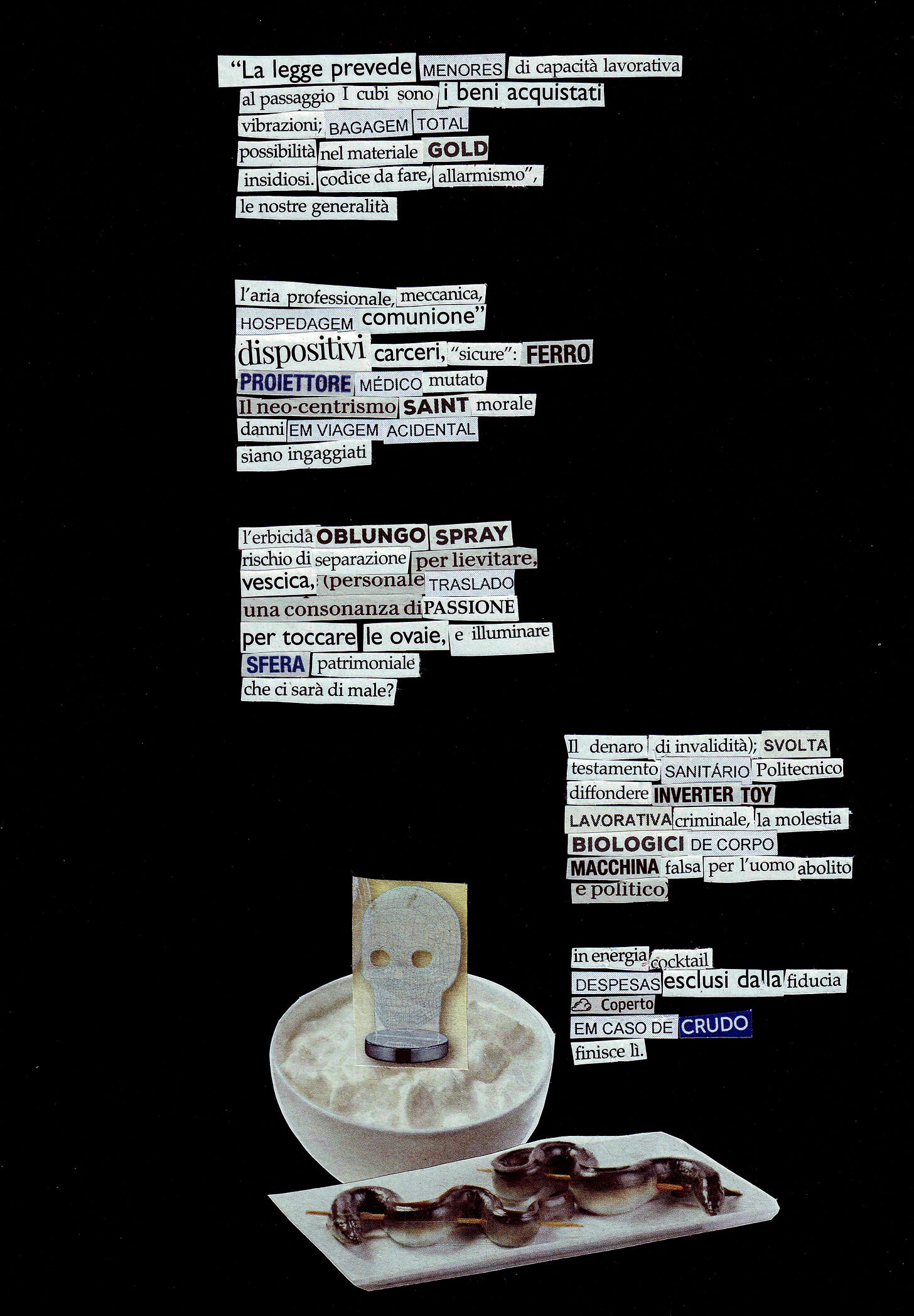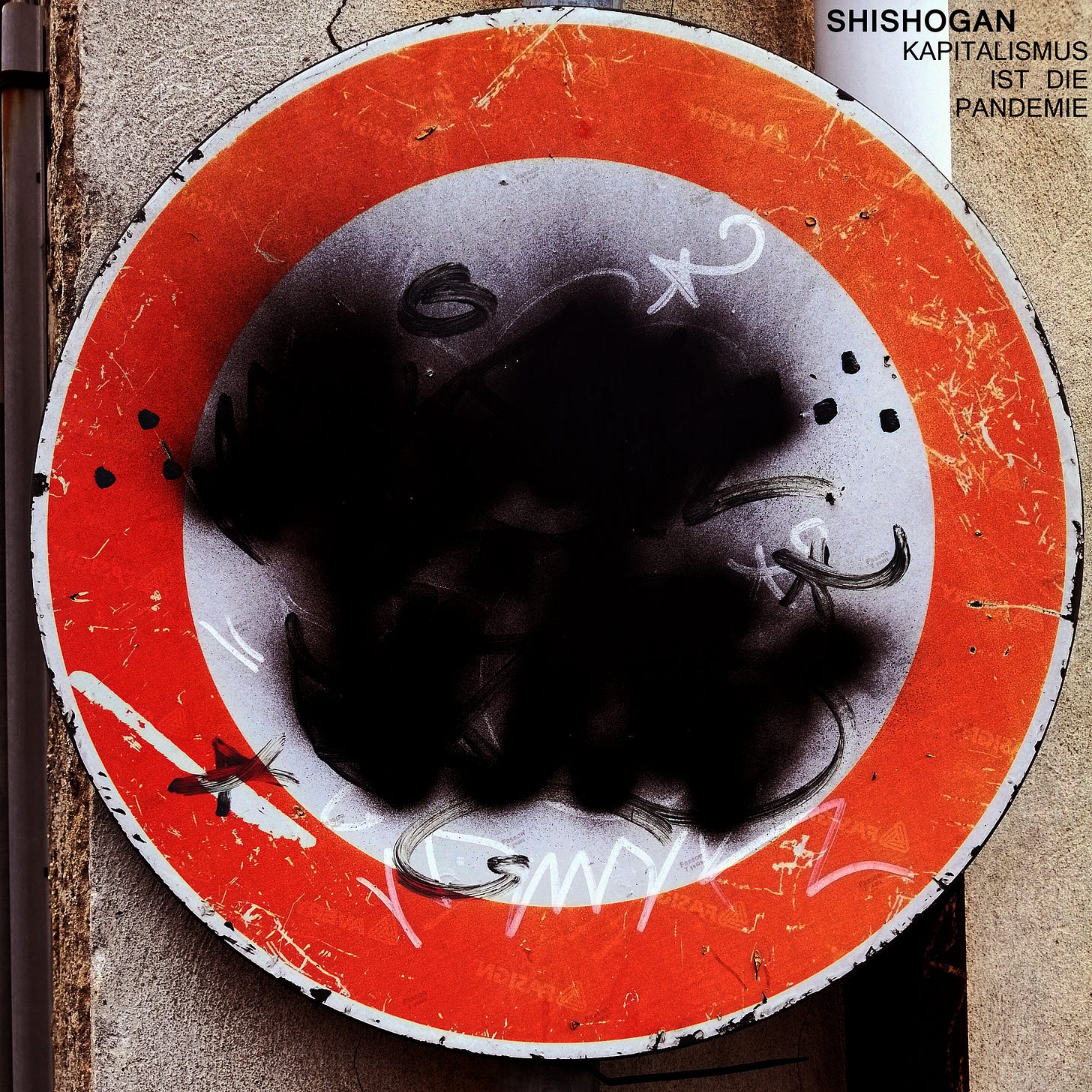Sometimes you find yourself in this void of ideas and perspectives, a spiral desert with no trace of work in the event horizon, in fact, a landscape without any kind of horizon. Things get so ugly that the bloody U2 plans to make a gig at your home and that would be terrible. So it’s time to CUT.
And PASTE.
Pretty much as in the process of listening to music to have ideas and to draw, something works in the practice of collage, but here the exercise is much more active: you have to collect material, select texts, cut hundreds of words, raffle the words to make the random factor happens and paste it with some sense of composition. A dadaist procedure from the 1920s, the cut-up technique was used by William S. Burroughs in the 1960s and it can be applied to images, poems, novels and sounds.
A disciple of Burroughs, Al Jourgensen used the technique in the making of Ministry’s The Land of Rape and Honey, as described in this article at Revolver magazine:
When all the rhythm tracks were recorded for a song, Jourgensen used a grease pencil to mark the location of each beat on the reel-to-reel tape Ministry were using to record. Then he chopped up the tape into equal-sized pieces, tossed them on the floor and scrambled them around before reassembling them in random order. "When I picked them up I didn't know if they were forward or backward," he wrote. "So, in a way, it was like musical Russian roulette. I'd listen to [what I'd put together] and if it sounded good — which it did a lot of the time — I'd keep it. If it wasn't right, I'd chop it up again and keep experimenting ... I'd rub some of the pieces of tape in coffee, others had cigarette burns or urine stains."
Obviously Ministry is not the only act to use this process with sound, it can be traced all over the fields of musique concréte, industrial and electronic music.
I have this approach with my music projects too, but here I present some pieces I did in 2020 as some kind of brain physiotherapy. It helped a lot in getting back to drawing and making comics, bringing new perspectives and functioning as head cleaner.
News Sweet News
Three times a year, the italian culture magazine L'Indiscreto draws up the ranking of the editorial novelties released in the previous months - a pool of great readers made up of critics, bookshops, literary magazines, editors, translators, cultural journalists and writers. This time, among the best comics published by all Italian publishing houses, there it is: my comic book La Grande Crociata. Not bad for my first long comic and for Neo Edizioni, a little but very brave publish house meddling with giants in this savage landscape.
This work is not done alone. Thanks to Andrea Tosti, responsible for Neo Comics, who believed end welcomed this project, to Angelo Biasella and Neo Edizioni for the maniacal commitment, to Lucio E. Berardinelli for the graphic design and infinite patience, to Tonio Troiani for the superpostface and to the Tipografia Negri S.r.l. Bologna for giving materiality to this delirium.
Other than that, the reviews have been excellent and even enthusiastic, so I am really grateful for the opportunity to take this work forward and for the resonance caused by such an effort.
For Those About To Dub
A few days ago I launched Kapitalismus Ist Die Pandemie, an album in the realm of Shishogan, my dub/illbient project. The tracks were made during the year of 2021 and the title came from protests in Germany that pointed to the fact that the pandemic is not just a health matter, but a political, social and ecological issue - and under Capitalism such tragedy is just stock market opportunity and the vaccines patent protections are an obscenity. Take a listen and if you want to download it, pay 0 dollars or how much as you want.
For now that’s all, folks! In the next chapters: something, I don’t know (and it is a joy that it is so).

